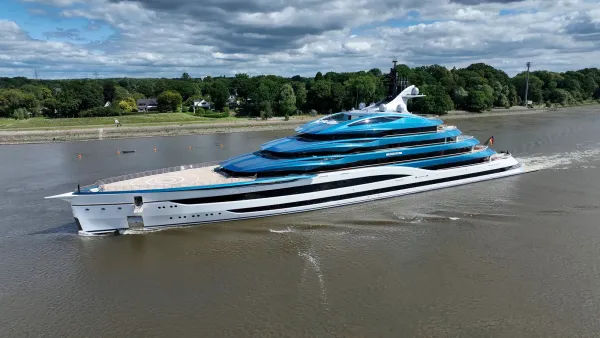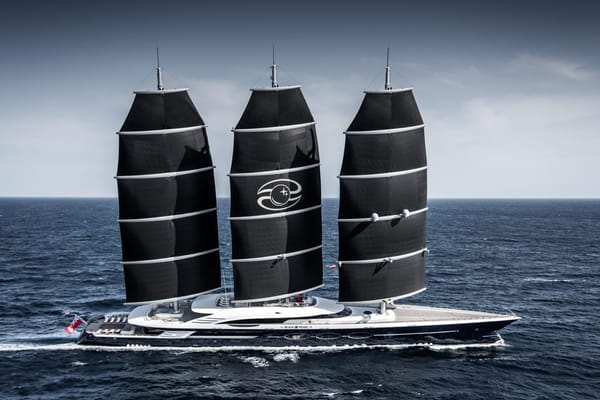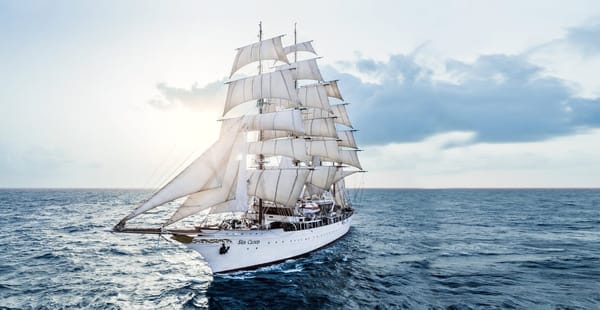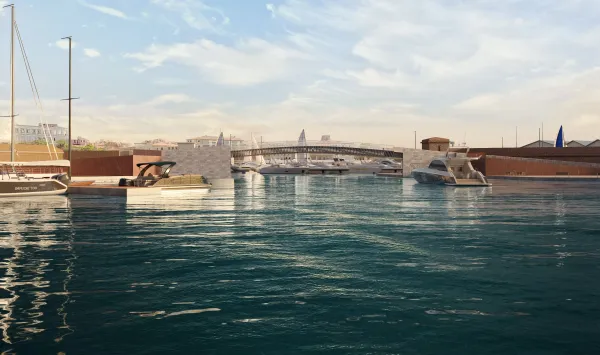How an Elite Shipyard Brought America's Cup engineering to Cruising Catamarans
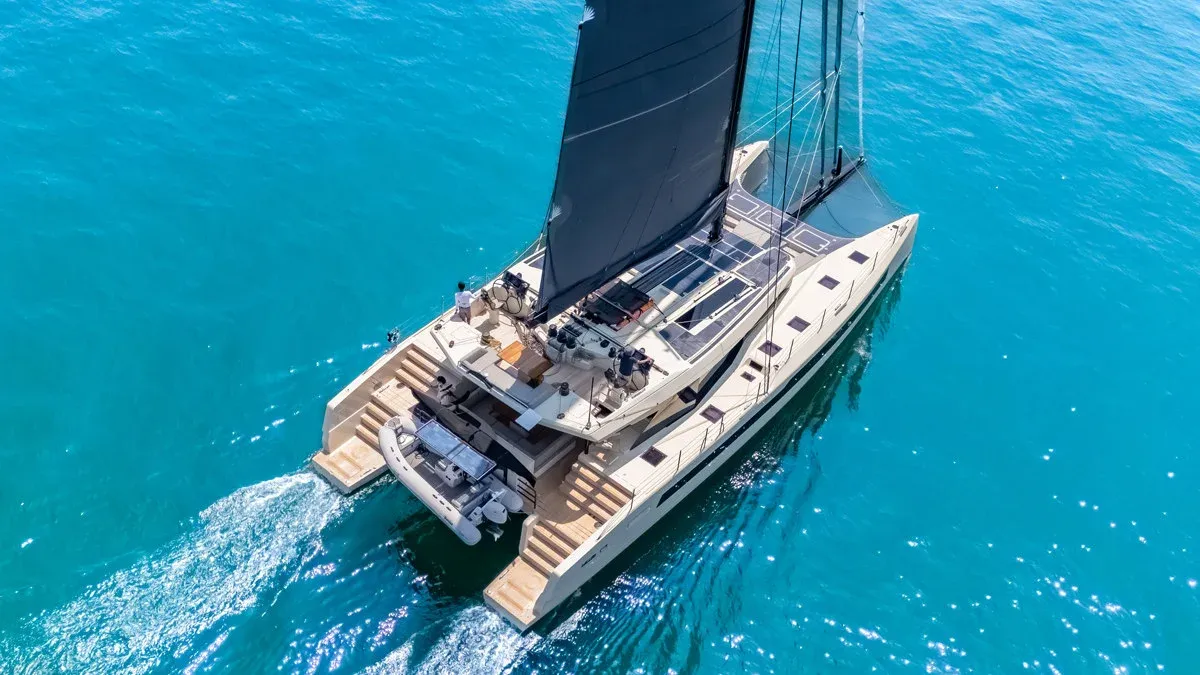
If you haven't kept up with the America's Cup in recent years (or ever), and you only know it as a high-profile sailing race, you might be surprised — maybe even baffled — to see the actual vessels the teams sail, these days: they float above the water, they have wings, their teams almost look more like Formula One drivers, hunkered down in individual seats. They can reach baffling speeds, too: the top speed in the last edition of the race clocked in at incredible 55.6 knots, or about 63 miles (101 kilometers) an hour — for reference, the speed of an ordinary cruising sailboat might be 6 knots. Even smaller motor yachts that are intended to be taken out for speedy joyrides rarely travel faster than 55.
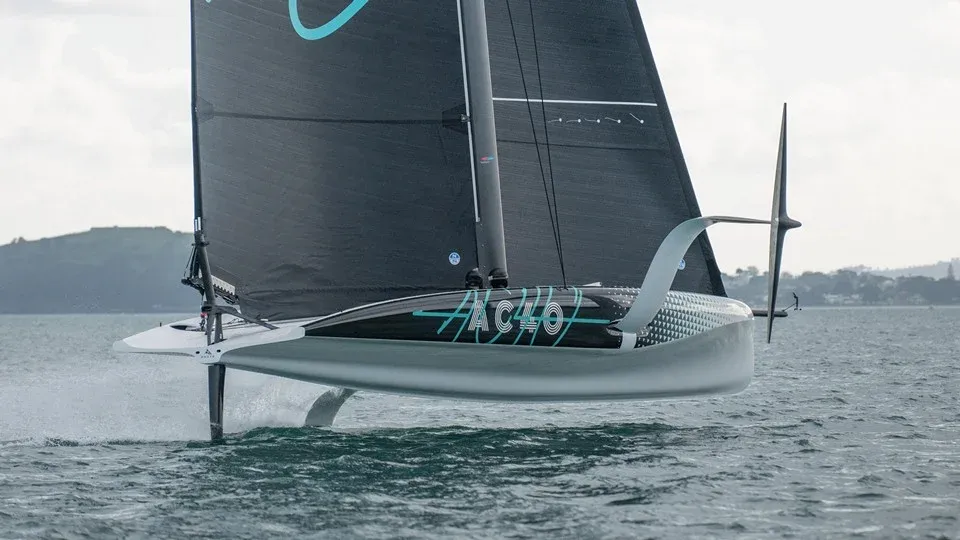
Applying that kind of speed, pressure, and force requires ultra-precise engineering — not only to achieve the highest possible speeds, but to ensure the stability and safety of the vessel during a rigorous, high-stakes race.
Most shipyards have no practical reason to think about engineering for extreme performance: does your daily driver need to be built like a Ferrari to get you from point A to point B? But for the builder and supplier of the America's Cup training vessels, that investment and engineering and stringent quality-control was already there — and it turned out there were very good reasons to apply a high-performance philosophy to regular cruising yachts.
McConaghy, the acclaimed Sydney-based shipyard, had long been revered in grand prix sailing circles for its uncompromising pursuit of speed, precision, and lightweight engineering. By the time it became involved with the America’s Cup, McConaghy was already synonymous with some of the fastest monohulls and multihulls ever built. Yet its entry into the world’s most prestigious and technologically audacious sailing competition felt less like a leap and more like an inevitability.
As the America’s Cup pivoted from its traditional monohull format toward the avant-garde era of hydrofoiling catamarans — and eventually to foiling monohulls — McConaghy’s expertise became increasingly indispensable. These were not simply boats; they were high-performance marine aircraft, demanding the kind of advanced composite engineering and aerodynamic mastery McConaghy had honed over decades. Their experience building cutting-edge carbon fiber trimarans, record-breaking maxi yachts, and featherlight grand prix racers placed them at the vanguard of the performance revolution sweeping through the Cup.
Rather than merely adapt to the new demands of the America's Cup, McConaghy helped define its future. Their contributions to foiling design, load-bearing architecture, and structural tolerances became benchmarks for the competition. In this new age — where the line between yacht and fighter jet has never been thinner — McConaghy was not just a participant; it was a principal architect of the America’s Cup’s most thrilling and transformative chapter.
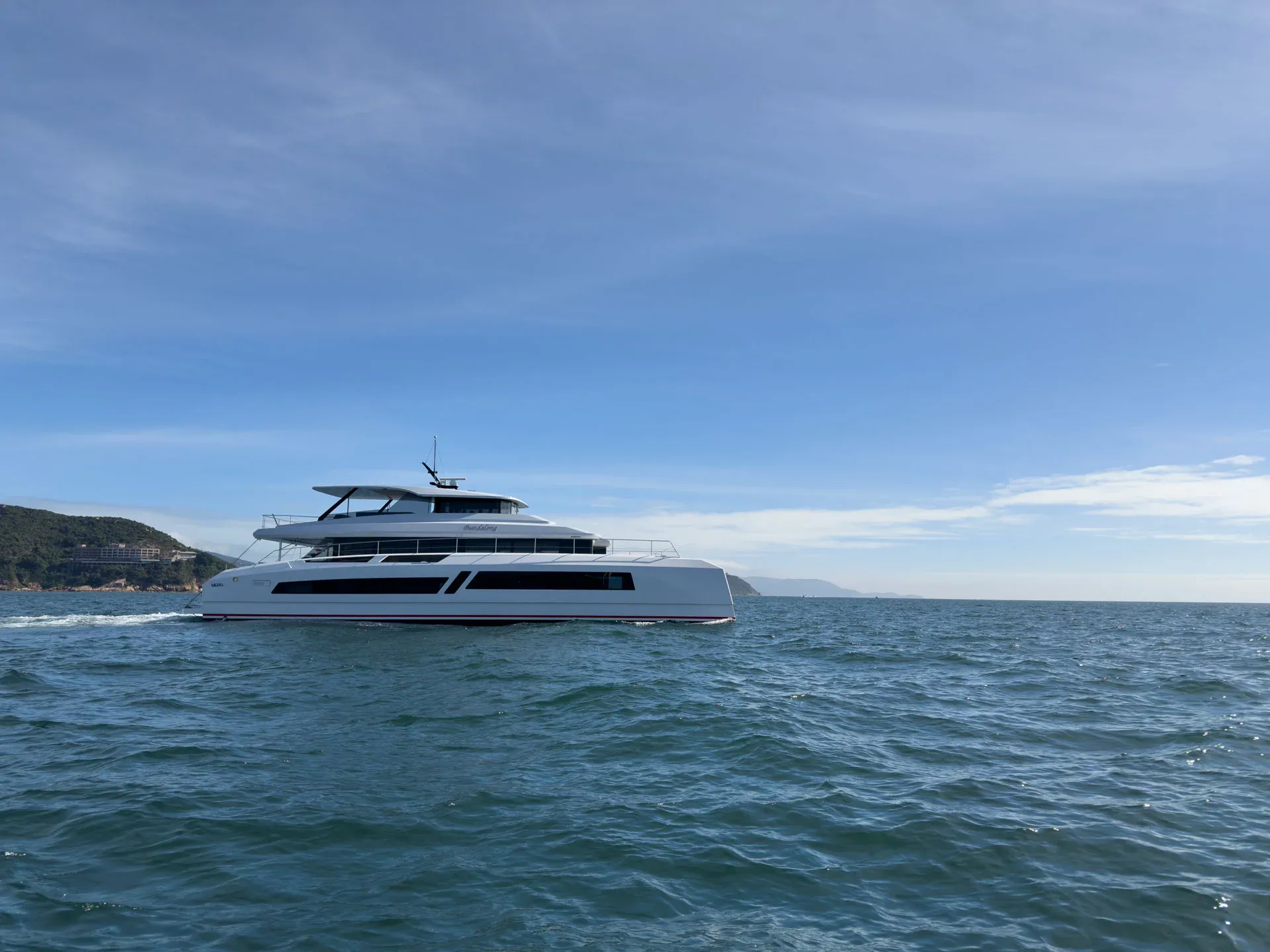
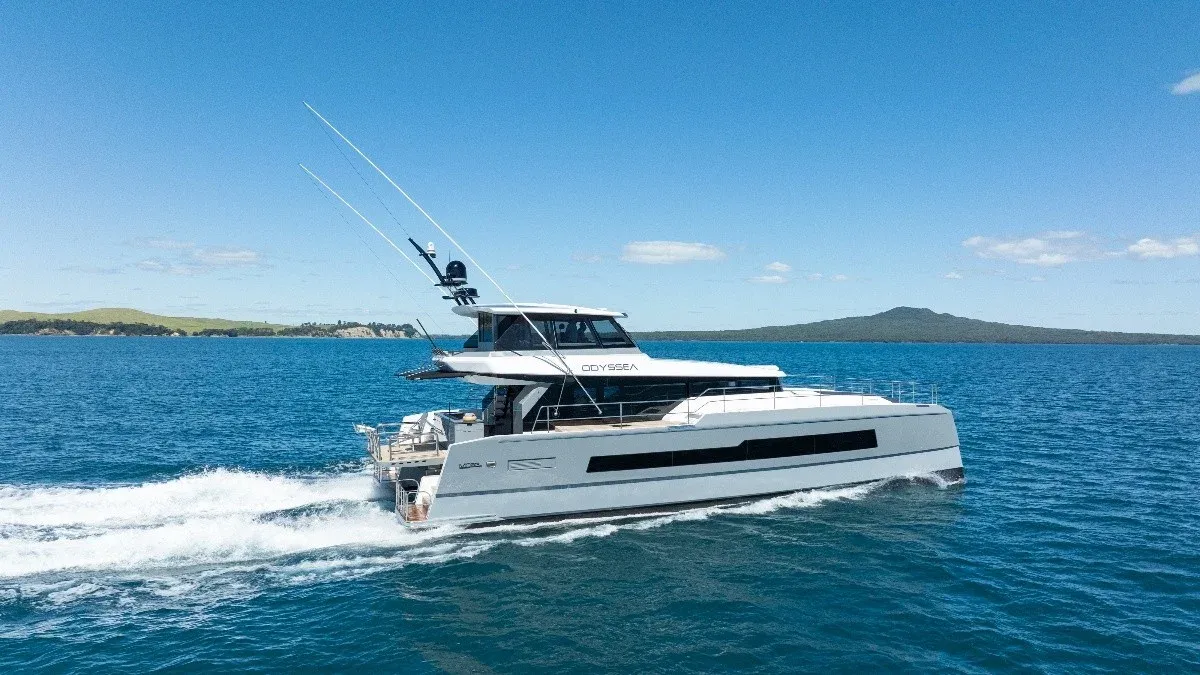
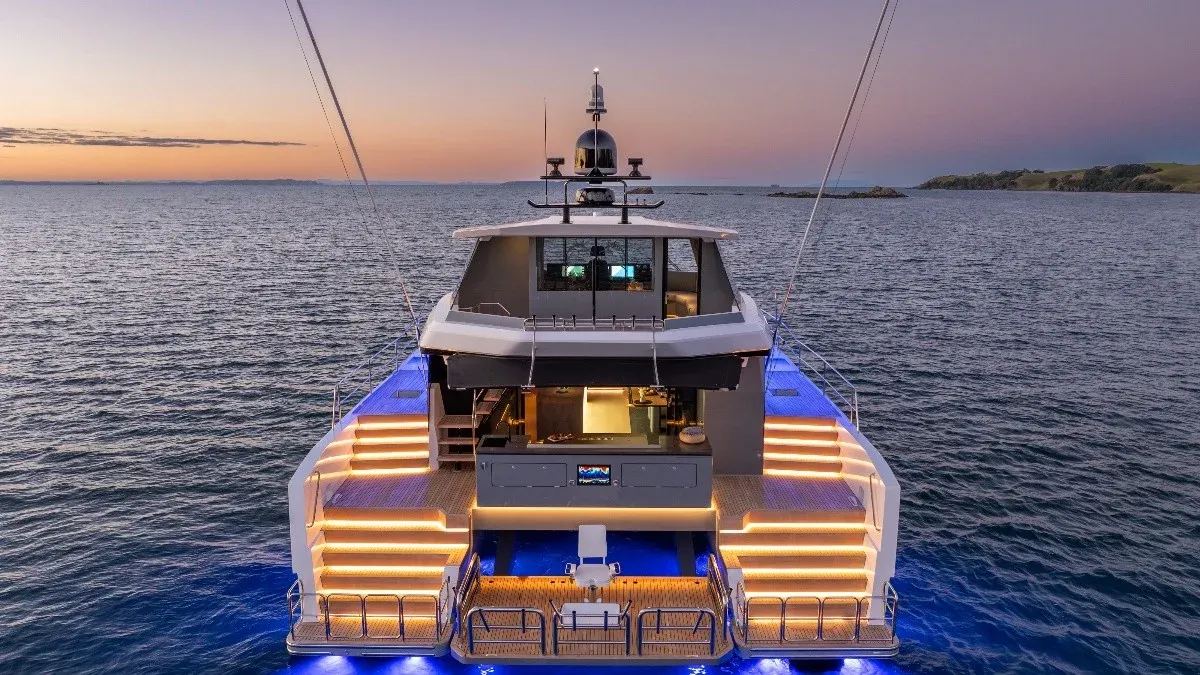
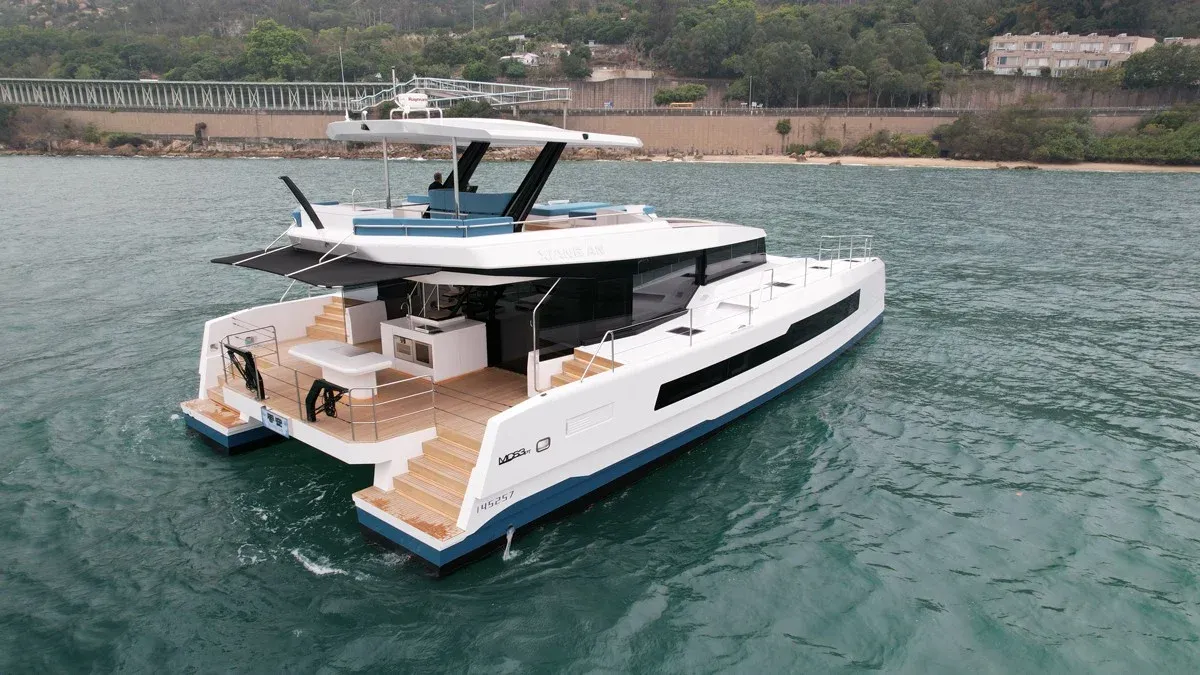
Around that time, a much less predictable sea-change was happening: consumer interest in cruising catamarans was spiking, thanks in part to chartered companies increasingly stocking their fleets with them for their appealing breadth of living space, easy access to sunlight and the water, and shallow draft, which allows them to head in far closer to beautiful, tucked-away beaches than most other types of yachts, and stability in popular holiday spots, like Mediterranean and Caribbean coastal waters. Consumer interest in eco-leisure was already brewing, fueling an interest in wind and solar power.
McConaghy was in a uniquely perfect position to lean into all three: fast, lightweight, people- and earth-friendly catamarans for sale.
Most builders of cruising yachts aren't focused on the virtues of raceboats — for obvious reasons, you might think. What does a cruiser, which should be focused on comfort and ease of use, need with racing features? Initially the answer might surprise you, but in hindsight, it makes perfect sense: raceboats have to be lightweight and streamlined to be competitive. What's the number one obstruction to efficiency in a cruiser, either concerning fuel or how far one can stretch solar power? Drumroll, please: weight and hydrodynamics.
To some degree, this feels like the future of yacht design: with customers demanding eco-friendly options (not to mention quieter options, with less of the noise of high-powered engines), and shipyards increasingly offering models with solar arrays, lightweight builds with minimal water resistance are likely to be in high demand moving forward. But there's another factor consumers increasingly ask for: speed.
Do you need speed in a cruising yacht? Sure— if you want the engines to be able to get enough energy out of the motion of the vessel to put energy back into the batteries/supply. This is particularly apropos in a sail-powered vessel, where eco-friendly systems could theoretically power the entire boat. It may have that option, but if it's not going fast enough, it's not harnessing the full power of the system.
That's where raceboat engineering is a boon. At 15 knots, you're not only blowing most sailboats out of the water while keeping up with motor yachts, but you're also utilizing the energy payback system.
Raceboat engineering is also built to withstand extreme conditions, including high-force impacts and bluewater seas, which makes the quality of the build paramount. McConaghy has found immense value in bringing that engineering and stringent build requirements to their entire fleet: impressively, they built the orignal Alfa Romeo 2 more than twenty years ago, and it remains one of the fastest raceboats in the world — but that doesn't just speak to speed; it also means the quality of the boat didn't degrade at all over time. How consumers might find value in this speaks for itself, but also speaks to McConaghy's philosophy: "make things easier for owners." That means there are some features buyers won't find aboard a McConaghy boat that are synonymous with luxury yachts — like teak decks — but the hidden reason for avoiding them is because they take approximately 10% of the vessel's price to keep them looking beautiful (teak that isn't so meticulously cared-for develops a gray color and splinters, and starts to look like beachwood - not pretty).
McConaghy Boats will have vessels at Cannes and a passarelle display at Annapolis for those who want to experience the technology firsthand. Those in the market for cruisers, catamarans, or racing boats, in the end, would be well served to check out their offerings, which are certain to be a zippy treat on the water.
For McConaghy, the lines between raceboat and cruiser have never been boundaries — only opportunities. The same composite mastery and performance pedigree that propelled Alfa Romeo 2 to stardom and helped redefine the America’s Cup now underpin the shipyard’s latest fleet of fast, featherlight catamarans. They are built not for excess, but for excellence: engineered to glide, to last, to generate and regenerate power, to elevate the onboard experience without burdening it with unnecessary weight or waste. As yachting steers toward a future shaped by sustainability, efficiency, and clean propulsion, McConaghy is already there — designing yachts that move with the elegance of a carbon foil and the brains of a race-winning campaign. And whether you’re stepping aboard at Cannes or Annapolis, one thing becomes clear the moment you feel a McConaghy hull rise onto a plane: this isn’t just the future of cruising.
It’s the future of yachting.



